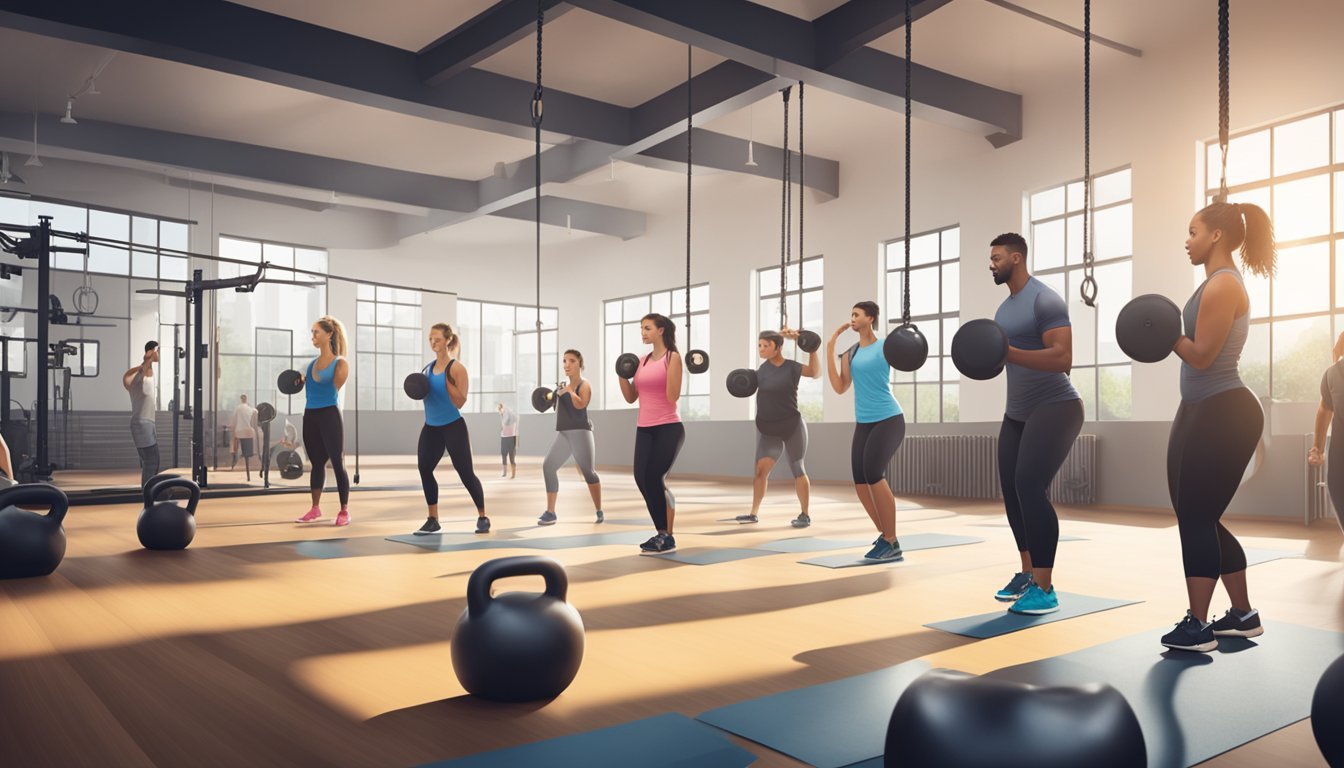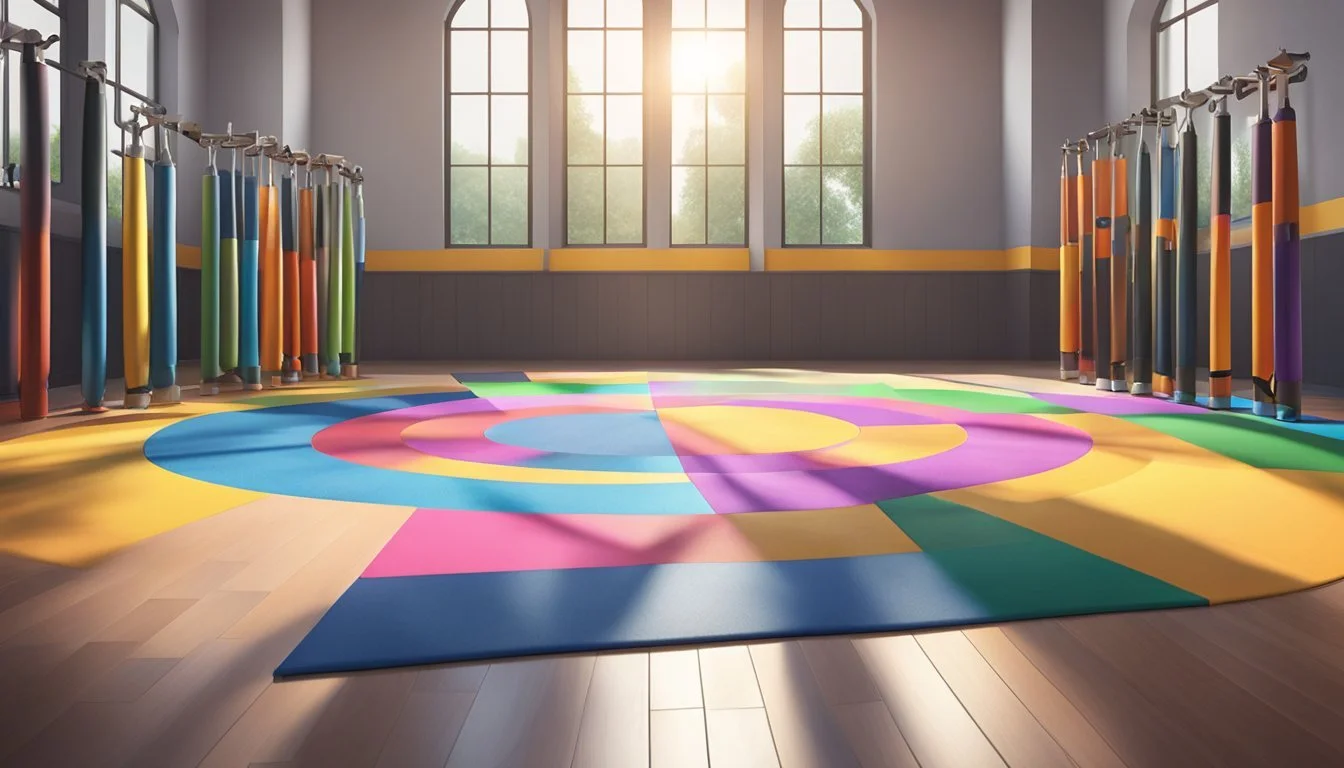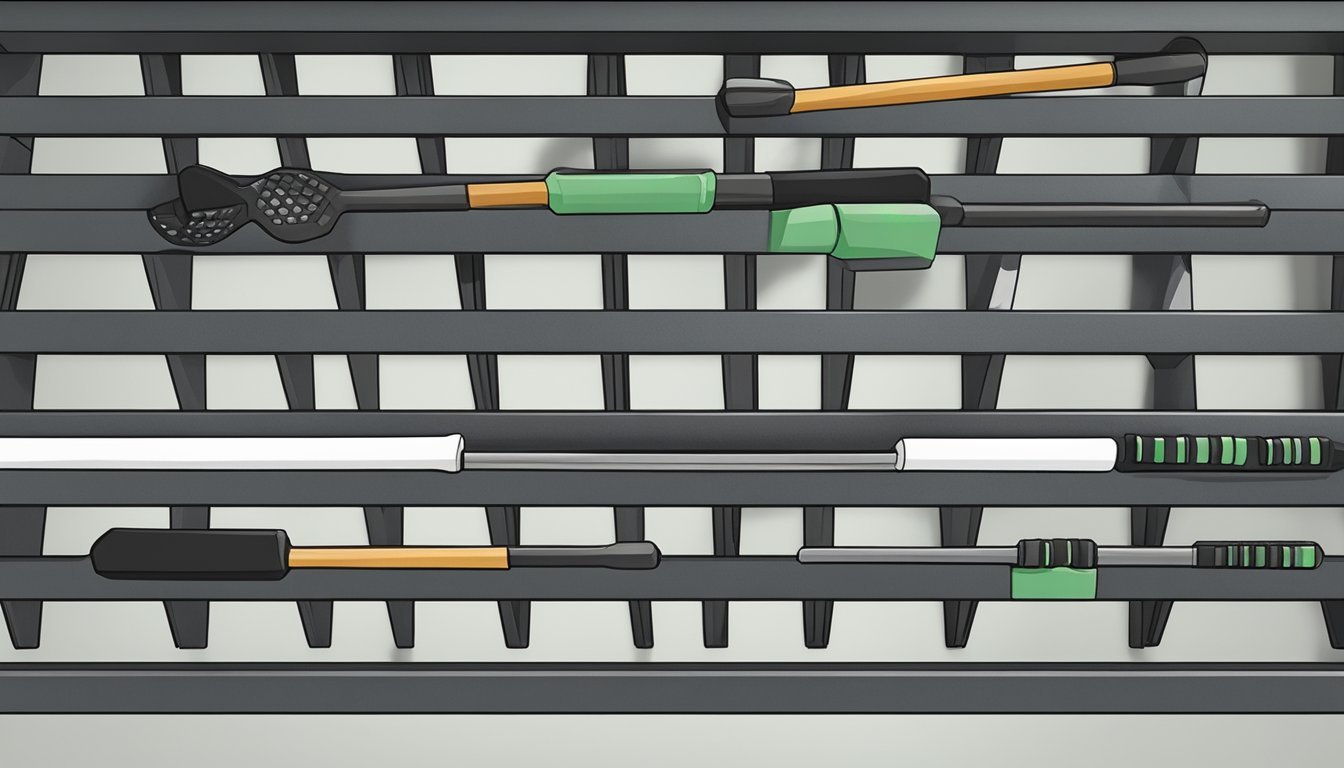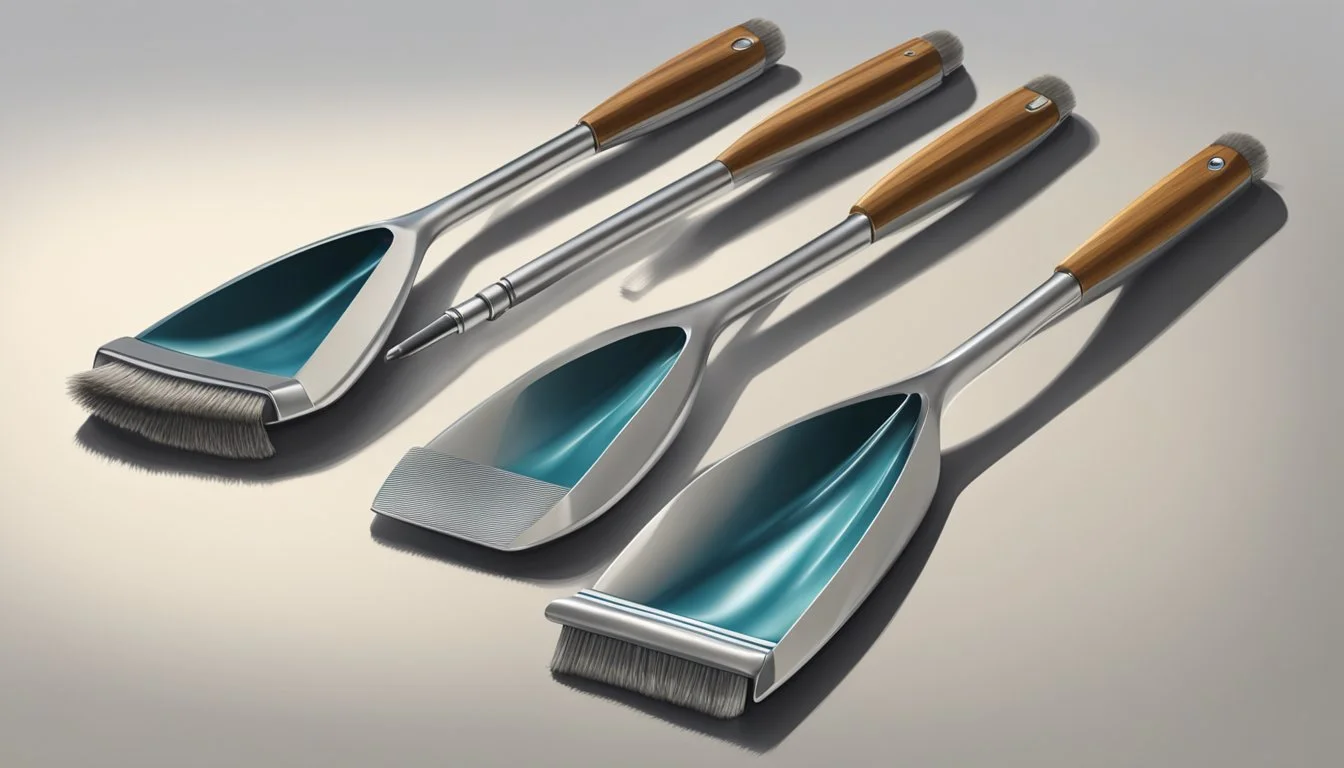Unleash Your Inner Warrior: Onnit Club's Ancient Secret Weapon Revolutionizes Fitness!
Onnit Steel Clubs offer a unique way to enhance fitness routines and build functional strength. These weighted implements, inspired by ancient Persian training tools, provide an effective means to develop grip strength, shoulder stability, and core power. Onnit's high-quality steel clubs range from 5 to 45 pounds, allowing users to progress as their abilities improve.
The versatility of these clubs makes them suitable for various exercises targeting different muscle groups. Users can incorporate swinging motions, presses, and rotational movements to challenge their bodies in new ways. This training tool appeals to those seeking to diversify their workouts and engage in more primal, full-body exercises.
Fitness enthusiasts and athletes alike may find value in adding Onnit Steel Clubs to their exercise arsenal. The clubs' design promotes improved coordination, balance, and muscular endurance. As a result, individuals can expect to see gains in overall physical performance and functional fitness when incorporating these tools into their regular training regimen.
What Are Onnit Clubs?
Onnit clubs are modern fitness tools inspired by ancient training practices. These weighted implements offer versatile strength and conditioning benefits, particularly for grip, shoulders, and core.
History of Indian Clubs
Indian clubs originated in ancient Persia as training tools for soldiers and wrestlers. They spread to India, where British colonizers discovered them in the 19th century. The clubs gained popularity in Europe and America as fitness equipment for military personnel and civilians alike.
These early clubs were typically made of wood and shaped like bowling pins. Users swung them in circular motions to build upper body strength and improve coordination.
Onnit Steel Clubs versus Traditional Indian Clubs
Onnit steel clubs modernize the traditional design. While sharing a similar shape, Onnit's version uses steel instead of wood. This change increases durability and allows for heavier weights.
Onnit clubs range from 5 to 45 pounds, offering more variety than many traditional wooden clubs. The steel construction also provides a more balanced weight distribution, enhancing control during exercises.
Design and Material
Onnit steel clubs feature a sleek, streamlined design. The handle incorporates knurling for improved grip. A chip-resistant powder-coated finish protects the steel body from wear and tear.
The clubs' bowling pin shape creates an offset center of gravity. This design element increases the challenge of various movements, engaging stabilizing muscles throughout the body.
Available in multiple weights, Onnit clubs cater to different fitness levels and exercise goals. Their durable construction ensures long-lasting performance for both home and commercial gym use.
Benefits of Club Training
Club training offers unique advantages for overall fitness and functional strength. It enhances mobility, builds grip and shoulder strength, and develops rotational power and core stability.
Mobility and Flexibility
Steel club exercises promote improved range of motion throughout the body. The swinging and circular motions engage multiple joints and muscle groups simultaneously. This helps increase flexibility in the shoulders, hips, and spine.
Club movements often require reaching overhead and behind the back. These actions stretch tight muscles and improve posture. Regular practice can reduce stiffness and enhance overall mobility.
The weight distribution of clubs challenges balance and coordination. This forces the body to adapt, leading to better proprioception and body awareness.
Grip Strength and Shoulder Work
Wielding steel clubs significantly enhances grip strength. The thick handles and dynamic movements tax the forearms and hands in ways traditional weights don't.
Shoulder health benefits from the varied angles and loads during club exercises. The rotator cuff muscles are strengthened through stabilizing actions.
Many club movements involve pressing, pulling, and circular motions. These actions build shoulder strength and endurance across multiple planes of motion.
Rotational Core Power and Stability
Club training excels at developing rotational strength. Swings and mills target the obliques and transverse abdominis muscles.
The offset weight of clubs challenges core stability. This builds a strong, functional midsection capable of resisting rotation and transferring force.
Exercises like the 360 and arm cast require full-body coordination. These movements integrate the core with the upper and lower body, improving overall stability and power output.
Incorporating Steel Clubs into Your Fitness Regime
Steel clubs offer unique benefits for strength, mobility, and overall fitness. They can be integrated into various workout styles to enhance functional movement patterns and core stability.
Foundation Movements
The spiral lift is a fundamental steel club exercise. It improves shoulder mobility and stretches wrist flexors. Start with a light club, gripping it near the ball end. Swing the club in a circular motion around your body, keeping your arm straight.
The shield cast targets core strength and rotational power. Hold the club vertically in front of your chest. Rotate your torso, swinging the club to one side, then back to center. Repeat on the opposite side.
Practice two-handed swings to develop grip strength and hip drive. Hold the club with both hands at the base. Hinge at the hips, swinging the club between your legs, then drive it up to shoulder height.
Full-Body Workouts
Combine steel club exercises for effective full-body routines. Perform 3 rounds of the following:
Club swings: 10 reps each side
Squats with club overhead: 12 reps
Alternating lunges with club press: 8 reps per leg
Russian twists: 20 total reps
Rest 60 seconds between rounds. This workout engages multiple muscle groups, improves coordination, and boosts cardiovascular fitness.
Rehab and Mobility Exercises
Steel clubs excel in rehabilitation and mobility work. The offset weight challenges stability and promotes joint health. Use gentle, controlled movements for these exercises.
Shoulder circles: Hold the club at arm's length. Make small circles, gradually increasing size. This improves shoulder range of motion and reduces stiffness.
Wrist rotations: Grip the club near its end. Slowly rotate your wrist, moving the club in circles. This exercise strengthens forearms and enhances wrist mobility.
Thoracic spine mobilization: Lie on your back, knees bent. Hold the club across your chest. Slowly roll to one side, keeping your hips stable. This improves upper back flexibility.
Choosing the Right Onnit Steel Club
Selecting an appropriate Onnit Steel Club is crucial for effective and safe training. The right choice depends on your fitness level, goals, and intended exercises.
Weight Variations
Onnit offers Steel Clubs in a wide range of weights, from 5 to 45 pounds. Beginners should start with lighter weights, typically 5-10 pounds, to master proper form and technique. Intermediate users may opt for 15-20 pound clubs, while advanced athletes can challenge themselves with 25-45 pound options.
For rehabilitation and mobility work, lighter clubs (5-10 pounds) are ideal. These weights allow for controlled movements and help strengthen stabilizing muscles. As strength and skill improve, users can progressively increase the weight.
Onnit's diverse weight options cater to various fitness levels and exercise types. This range enables users to customize their training and gradually increase intensity over time.
Safety and Handling
Proper handling of Onnit Steel Clubs is essential for safety and effective workouts. Always inspect the club for any damage before use. Ensure a firm grip on the handle, especially during swinging motions.
Start with slow, controlled movements to familiarize yourself with the club's weight distribution. Maintain proper form throughout exercises to prevent injury and maximize benefits. Keep a clear space around you when swinging the club to avoid hitting objects or people.
Wear appropriate footwear for stability during exercises. Consider using wrist wraps for additional support, particularly with heavier clubs. Clean the Steel Club regularly to maintain grip and hygiene.
Training Techniques and Progressions
Steel club training offers a diverse range of techniques to enhance strength, mobility, and overall fitness. Proper progression allows practitioners to safely advance from foundational movements to complex patterns.
Beginner Techniques
Steel club beginners start with basic grips and movements. Two-handed swings build a solid foundation, engaging the core and posterior chain. Single-arm exercises like halos improve shoulder mobility and stability. Front lever holds strengthen the upper body and develop grip strength.
Novices practice controlled pendulum swings to master weight distribution. Figure-8s enhance coordination and teach proper hip hinge mechanics. As technique improves, trainees progress to alternating swings, gradually increasing club weight and repetitions.
Advanced Movement Patterns
Advanced practitioners incorporate complex movement patterns. The 360-degree mill enhances shoulder mobility while challenging core stability. Inside circles target the rotator cuff muscles, improving shoulder health and performance.
Single-arm snatches and cleans develop explosive power. Cast swings challenge grip strength and full-body coordination. Advanced trainees combine movements into flow sequences, seamlessly transitioning between exercises.
Steel club juggling tests reflexes and spatial awareness. Heavy club work builds tremendous grip and forearm strength. Integrating steel clubs with other training tools creates challenging hybrid workouts for experienced athletes.
Maintenance and Care for Your Steel Clubs
Steel clubs are durable training tools designed to withstand intense workouts. Their powder-coated finish provides chip resistance and long-lasting protection. However, proper care is essential to maintain their quality and extend their lifespan.
After each use, wipe down the clubs with a clean, dry cloth to remove sweat and dirt. For tougher grime, use a damp cloth with mild soap, then dry thoroughly to prevent rusting.
Store steel clubs in a cool, dry place away from direct sunlight and extreme temperatures. Avoid dropping them on hard surfaces, as this can damage the coating or affect the club's balance.
Regularly inspect your clubs for any signs of wear, chipping, or loose parts. Address minor issues promptly to prevent further damage. If significant damage occurs, consider replacing the club for safety reasons.
To maintain the grip, periodically clean the handles with a soft brush and mild soap solution. Rinse and dry completely before use.
By following these simple maintenance steps, your steel clubs will remain in top condition for years of effective training.






